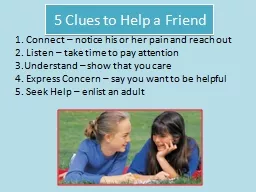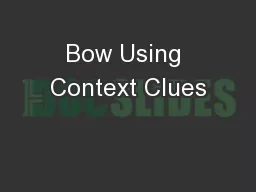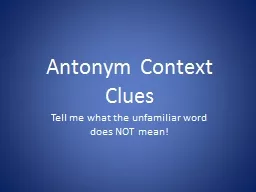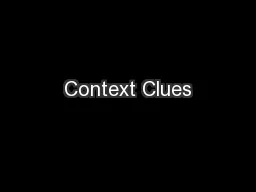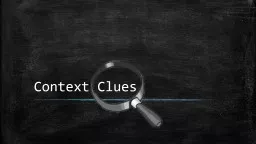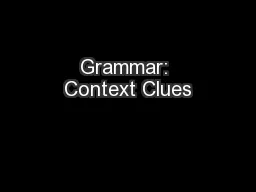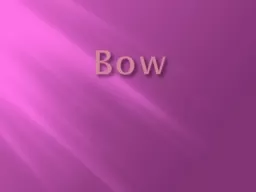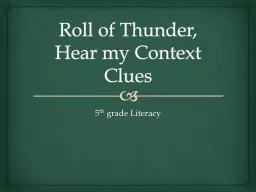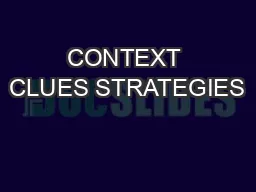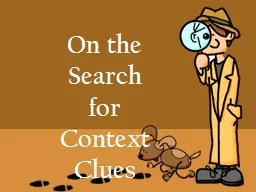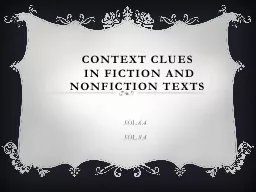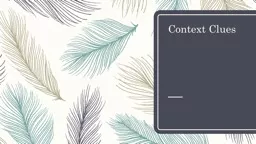PPT-5 Clues to Help a Friend
Author : phoebe-click | Published Date : 2016-07-10
1 Connect notice his or her pain and reach out 2 Listen take time to pay attention 3Understand show that you care 4 Express Concern say you want to be helpful
Presentation Embed Code
Download Presentation
Download Presentation The PPT/PDF document "5 Clues to Help a Friend" is the property of its rightful owner. Permission is granted to download and print the materials on this website for personal, non-commercial use only, and to display it on your personal computer provided you do not modify the materials and that you retain all copyright notices contained in the materials. By downloading content from our website, you accept the terms of this agreement.
5 Clues to Help a Friend: Transcript
Download Rules Of Document
"5 Clues to Help a Friend"The content belongs to its owner. You may download and print it for personal use, without modification, and keep all copyright notices. By downloading, you agree to these terms.
Related Documents

